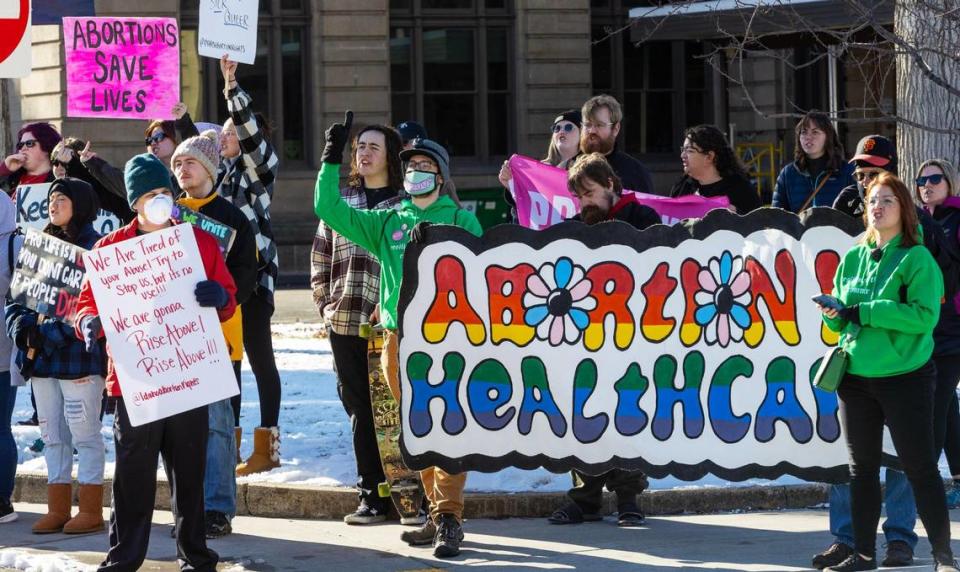Overturning Roe created a frightening reality. Impact on Idaho is visible in Oregon | Opinion

It was a terrifying moment when a patient from Idaho began leaking fluid during her pregnancy. She was diagnosed with a pregnancy complication in which the amniotic sac surrounding the baby breaks. Once the sac breaks, the risk of developing a serious infection is high. She was told it was very unlikely her baby would survive.
But because she was in Idaho, the patient was not able to receive the recommended care, an abortion. A new law in Idaho bans health care professionals from ending someone’s pregnancy unless the fetus no longer has a detectable heartbeat or the patient experiences a medical emergency. But under Idaho’s extremist laws, determining what is a medical emergency has become a legal minefield for doctors. The patient, who soon developed a life-threatening infection, was rushed to Oregon.
Although a care team at Oregon Health & Science University was able to treat her, it was a traumatic experience: Not only did she have to deal with the sudden loss of a desired pregnancy while facing a frightening medical diagnosis, but she was forced to do so away from her home, community and support system.
Providers are seeing these types of circumstances every week as Oregon experiences a significant influx of out-of-state patients seeking abortion care in the one year since the U.S. Supreme Court overturned Roe v. Wade — ending 50 years of federal abortion protections in the United States — with its decision in Dobbs v. Jackson Women’s Health Organization. Since then, many states have, like Idaho, implemented total abortion bans or adopted other extreme restrictions on abortion care.
These dangerous policies have resulted in abortion services — what should be basic health care — becoming increasingly unsafe and inaccessible to individuals, especially for people of color, immigrants, low-income individuals and LGBTQ+ people, who already face significant barriers.
And they have forced many patients to travel to other states for care; face potential harm to their health; or continue an undesired pregnancy.
Oregon is experiencing the impact of this dilemma firsthand. In the first six months after the Dobbs decision, the number of abortions performed in Oregon for out-of-state residents shot up to 543 – a 48% increase over the 366 abortions during the same six-month period a year earlier, according to Oregon Health Authority statistics. It’s worth noting that the majority of abortion care in the state is performed by a small handful of providers, so any increase has a significant impact.
In a shift from previous years, the majority of OHSU’s out-of-state patients last year were from Idaho and Texas — states with some of the most restrictive laws. OHSU also saw individuals from states we have never seen before, including South Dakota, Oklahoma, Louisiana and Florida.
And for those who do make it to Oregon, it’s rarely an easy journey.
These individuals are extensively delayed in receiving care due to financial constraints, managing time off work and childcare, travel logistics and health care system barriers, including lack of insurance coverage or cultural and language barriers. They are often scared and experiencing significant trauma.
Now more than ever, Oregon’s reproductive health providers face an increased responsibility to ensure people from out-of-state are able to access safe and legal abortions. Managing this increase in demand for services requires additional time and resources and strains our own health care system, often increasing workloads for providers and wait times for patients.
This also highlights how we as OB/GYNs and Oregonians are at the center of a national reproductive health crisis. Our reproductive health protections affect people far beyond our borders, and we all can reach beyond our statehouse and clinics to fight for reproductive justice.
Supporting organizations like Planned Parenthood and ACLU will fuel national efforts to challenge these harmful abortion bans in courts and at the ballot box. OHSU’s own Center for Reproductive Health Equity will provide data-driven education to support those efforts. Additionally, community support of this work though efforts like the Abortion Care and Training Fund are essential to ensuring Oregon can remain a safe haven for individuals who need this life-saving care.
The past year has been a very frightening reality. We’re now seeing the very real consequences the Dobbs decision, and all other policies aimed to restrict reproductive health, are having on individuals across this country. Despite the uphill battle we’re fighting, we will continue to do everything we can to ensure that everyone has access to safe, legal abortion care.
Alison Edelman and Maria Rodriguez are both physicians at Oregon Health & Science University’s Center for Women’s Health and hold master’s degrees in public health.

 Yahoo Sports
Yahoo Sports 